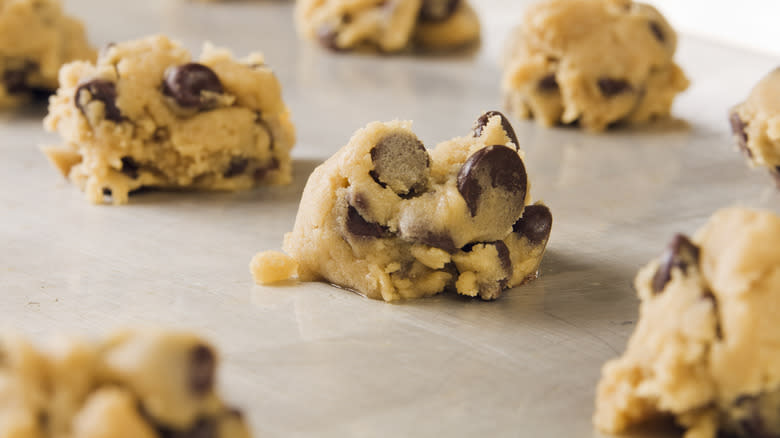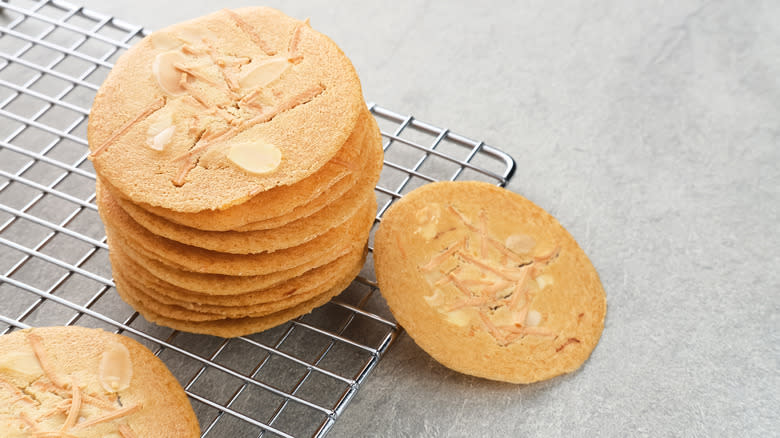Why You Shouldn't Keep Cookie Dough Out Between Batches When Baking

Next time you're baking cookies, you should strongly consider chilling the dough. This is because the colder temperature will help prevent the cookies from spreading out too thin while they're in the oven, which helps to maintain the texture. Plus, the flavor will be increased if made from chilled dough -- certain ingredients, such as vanilla, are brought out in a more noticeable way when the dough has been chilled. Chilling the dough for as little as half an hour can make a major difference. It also helps, especially with chocolate chip cookies, to roll them into balls and place them on a baking sheet, put them in the fridge or freezer to chill (rather than chilling the dough in the mixing bowl).
But even if you already know the benefits of chilling the dough, you may not know one important factor of the chilling method: Keeping the cookie dough in the fridge or freezer between batches. While it may be a natural impulse to leave the dough out on the counter while you're waiting for the first batch to bake -- after all, the baking time of cookies isn't usually very long -- the cookies will benefit from more chilling time while waiting to go in the oven. If you want your cookies to come out as perfect as possible, you'll want to do everything you can to make that happen, including making sure that the dough is chilled enough to keep its shape and enhance the flavor.
Read more: 30 Types Of Cake, Explained
What Types Of Cookies Don't Need Chilling?

While it's important to keep the chilling method in mind for certain cookies, there are also types of cookie dough you shouldn't refrigerate beforehand. You may be wondering how to know when to skip the chilling dough or not -- and, luckily, it doesn't require you to memorize which cookie types require chilling and which don't. All you need to remember is one simple rule of thumb: If the cookie is meant to be thin and crispy, its dough does not need to be chilled prior to baking.
As explained above, the reason to chill dough is to prevent the cookies from spreading too thin -- but this is exactly what you want with super crispy cookies, so you'd want to avoid chilling the dough in those instances. Examples of this include tuile cookies (wafer-like cookies) or sugar cookies that are intended to be crispy (whereas soft and fully sugar cookies would need chilling). You may even like it when chocolate chip cookies are ultra-thin and crunchy, so if that's your preference, you'll want to skip the chilling process.
Read the original article on Tasting Table.

